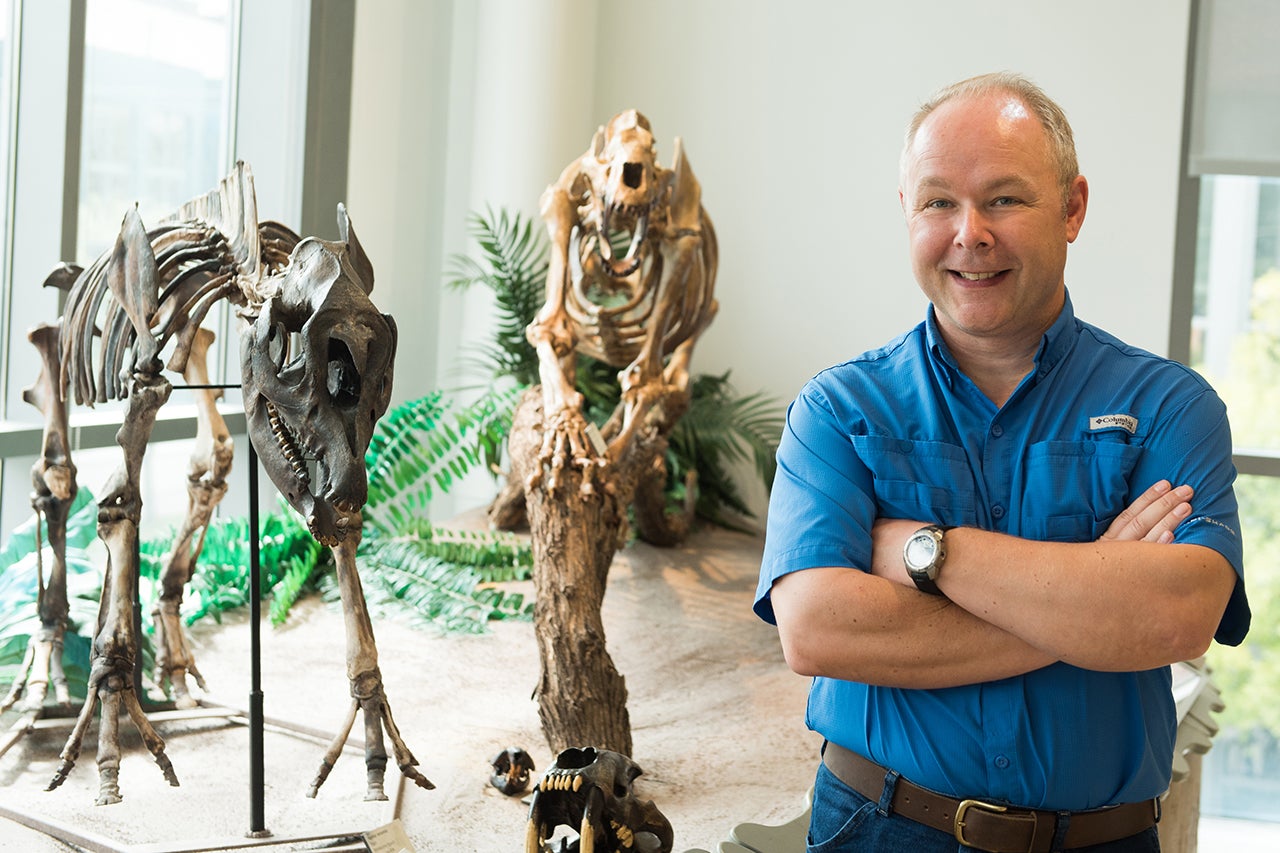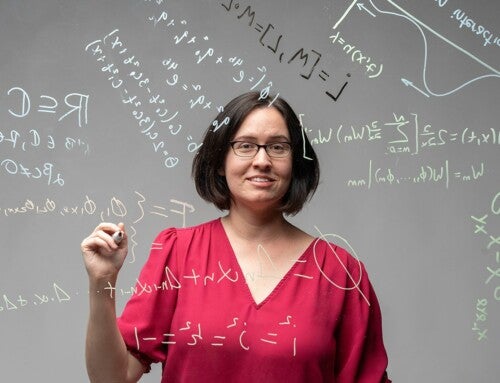When College of Charleston paleontology professor Phil Manning takes the stage for his presentation at the 2016 TEDxCharleston program on Oct. 19, 2016, he will shed a very bright light on some of his recent research.
In this case, the light is brighter than 10 billion Suns.
Using a synchrotron, which is a type of particle accelerator, Manning and a team of scientists have been able to dramatically improve the imaging and analysis of fossils.

Paleontologist Phil Manning is a professor in the Department of Geology and Environmental Geosciences and the director and curator of the Mace Brown Museum of Natural History.
Because the synchrotron produces light of extraordinary brightness, scientists are able to analyze the chemical composition of fossils at the atomic scale, something not unavailable to them in the past. By doing this, Manning, who also serves as director and curator of the College’s Mace Brown Museum of Natural History, and his team have determined the biochemistry and associated anatomy of many extinct animals and related this to how they were preserved in specific environments.
Manning says that this research will help provide a better understanding of how the environment impacts us and how we impact the environment. He believes we can use this information to better manage a sustainable future for our planet.
TEDxCharleston will be held at the Charleston Music Hall on Oct. 19, 2016. While tickets to the live event have already sold out, the program will be streamed live at three locations in the Charleston area, including The College of Charleston North Campus. To register for the live stream, visit the TedxCharleston website at http://tedxcharleston.org/attend-2/.
RELATED: Read how Phil Manning brought a T. rex to CofC.





